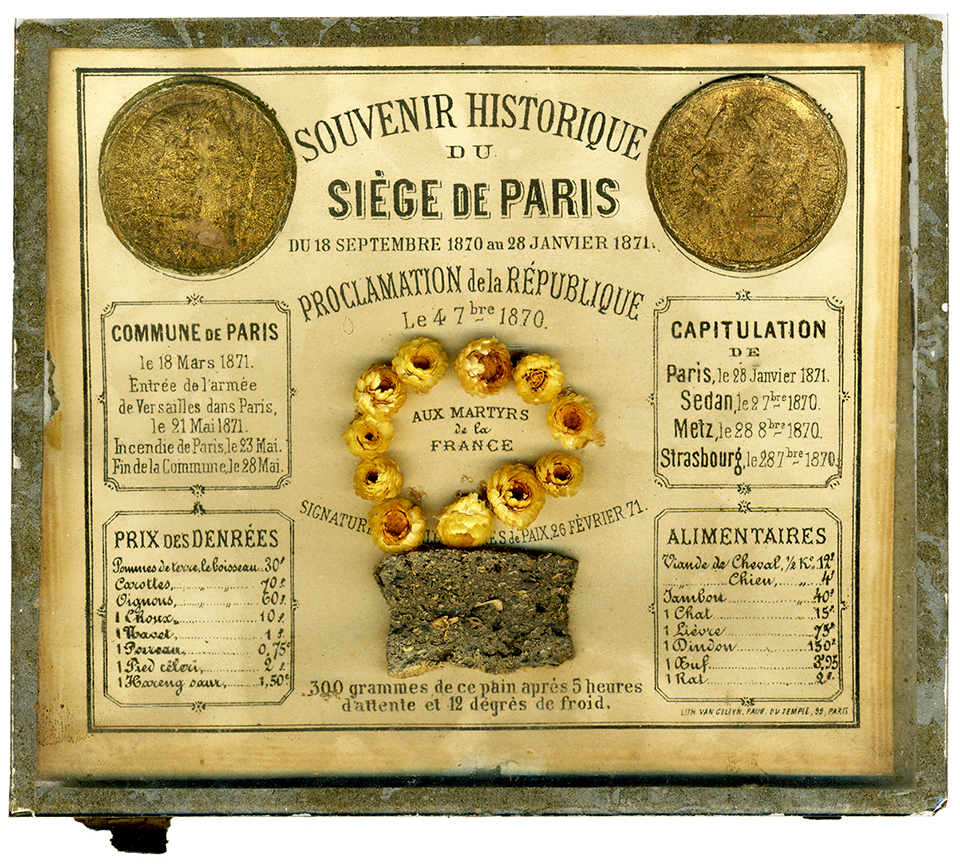
This unusual item consists of a printed card featuring two metallic seals and printed information with small flowers and a piece of dark, coarse bread (!) glued to it. It is a piece commemorating the Siege of Paris (18 September 1870 – 28 January 1871) during the Franco-Prussian War. The seals feature the portraits of the leaders of the war's opposing powers, for France – Emperor Napoleon III, and for the Germans – Kaiser Wilhelm I. Printed in various sections on the card are the dates of significant events during the conflict, as well as a list of prices for various foods available in Paris during the city’s besiegement. The list of foods and prices is illustrative of the dire conditions in Paris in the latter stages of the siege, with meats such as horse, dog, cat, and even rat on the list. For comparison’s sake, the card’s listed price of one rat at two 1871 French francs is roughly equivalent to more than ten 2023 U.S. dollars! Also of note is the small piece of bread glued to the bottom of the card. The caption under the bread translates to English as “300 grams of bread after five hours of waiting in 12 degrees of cold”, meaning -12 degrees Celsius, or 14 degrees Fahrenheit. As the siege dragged on, food grew scarce and Parisians often had to endure long, cold waits in order to receive a daily allotment of 300 grams of bread, a bit more than half of a pound. The bread was often made with whatever was at hand, as flour was in short supply.
The souvenir was sent to Henry Wadsworth Longfellow in 1874 by his friend and fellow literary figure Xavier Marmier, who was variously described as a poet, novelist, travel-writer and even archaeologist. Longfellow met him in Paris during his family’s Grand Tour of Europe in 1868-1869. The item was apparently a gift to Longfellow from Marmier’s Breton housekeeper, as Henry wrote in his acknowledgement of the piece’s receipt in 1872 "Thanks also your brave Bretonne for the votive tablet of the sorrow and sufferings of Paris during the siege. I have it on my chimney-piece in my dining room, as a memento mori, and skeleton at the feast.”
For the remainder of his life Longfellow maintained an intermittent correspondence with the French writer, and Henry kept photographs of Marmier in an album of cartes-des-visite. The two had much in common; both were polyglots, and they shared an interest in exposing their home countries to the language and literature of other cultures. Marmier translated Longfellow’s New England Tragedies into French in a volume titled Drames et Poesies (Dramas and Poems), first published in 1872, and he appears to have corresponded with Longfellow's daughter Alice after her father's death in 1882. Marmier himself lived until 1892, when he died in Paris.
